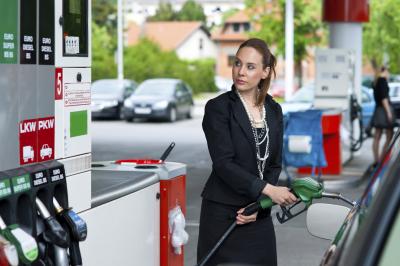A car's gas tank will build pressure under normal operating conditions. High pressure in a car's gas tank may cause dangerous conditions. High gas tank pressures in a car may cause gas tank bulging, fuel line leaks, fuel pump problems, lack of fuel to the engine for combustion, dangerous conditions when opening the gas tank filler cap and potentially create fire hazards.

Vehicle gasoline is not a singular substance. It contains a mixture of over 500 hyrdocarbons. Because of the volatile nature of many of the compounds, the movement of the car allows gasoline to vaporize in the gas tank. Vaporized fuel builds pressure in the tank.

The gasses released from liquid gasoline in a sealed container (the gas tank) are directly affected by the temperature of the gasoline; the higher the temperature is, the more pressure builds in the container. Reducing the temperature of the gasoline and car's gas tank has the opposite affect. Vaporized molecules will condense and pressure will reduce.

Normal pressure in a fuel tank is kept stable through the evaporative emission control system (EVAP) system. High pressure can occur if any part of the EVAP system fails, becomes clogged or is restricted. The most common points of failure are a kinked fuel vapor line, a clogged EVAP canister or a failure in the purge control or vent solenoid. Failure to allow vapor pressure to move appropriately through the EVAP system raises the overall car gas tank pressure.

Evaporated gasoline is contained in the air above the stored fuel in the car gas tank. Because vapors create more pressure than liquid gasoline, pressure builds as the gas tank becomes less full.
